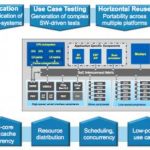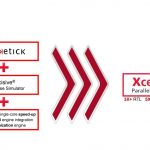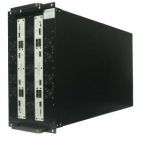In a discussion with Hilde Goosens at Sigasi, she reminded me of an important topic, relevant to the Sigasi platform. Some aspects of technology benefit from competition, others less obviously so and some absolutely require standardization. Imagine how chaotic mobile communication would be if wireless protocols weren’t standardized.… Read More
Author: Bernard Murphy
Perspective in Verification
At DVCon I had a chance to discuss PSS and real-life applications with Tom Anderson (product management director at Cadence). Tom is very actively involved in the PSS working group and is now driving the Cadence offering in this area (Perspec System Verifier), so he has a pretty good perspective on the roots, the evolution and practical… Read More
ESDA Event: Power and Policy in California
Apparently this event is now being postponed until sometime later in the year. Stay tuned
We spend a lot of our time with our heads down in the technical details and when we look up at what we think is the big picture, it’s usually just a little bit bigger, often no more than a justification for immediate product directions. So wouldn’t… Read More
Simulation done Faster
When it comes to functional verification of large designs, huge progress is being made in emulation and FPGA-based prototyping (about which I’ll have more to say in follow-on blogs), but simulation still dominates verification activity, all the way from IP verification to gate-level signoff. For many, while it is much slower… Read More
Prototyping: Sooner, Easier, Congruent
DVCon 2017 is a big week for Cadence verification announcements. They just released their Xcelium simulation acceleration product (on which I have another blog) and they have also released their latest and greatest prototyping solution in the Protium S1. This is new hardware based on Virtex UltraScale FPGAs on Cadence-designed… Read More
Webinar: FPGA Prototyping and ASIC Design
When you think about working with an ASIC service provider like Open-Silicon, you probably think about handling all the architecture, design and verification/validation in your shop, handing over a netlist and some other collateral, then the ASIC services provider takes responsibility for implementation and manufacturing.… Read More
Zero Power Sensing
We’ve become pretty good at reducing power in IoT edge devices, to the point that some are expected to run for up to 10 years on a single battery charge. But what if you wanted to go lower still or if, perhaps, your design can’t push power down to a level that would meet that goal? One area in systems where it can be challenging to further … Read More
Mentor gets Busy at DVCon
You’d expect Mentor to be covering a lot of bases at DVCon and you wouldn’t be wrong. They’re hosting tutorials, a lunch, papers, posters, there’s a panel and of course they’ll be on the exhibit floor. I’ll start with an important tutorial that you really should attend, Monday morning, on creating Portable Stimulus Models… Read More
Mentor Plays for Keeps in Emulation
EDA has always been a fiercely competitive market, no more so than in emulation where the clash of claims and counter-claims can leave those of us on the sidelines wondering who’s really on top. Sales are the obvious indicator but leadership there flips back and forth between product releases. That makes Mentor’s choice to play … Read More
Aldec Rounds Out ALINT-PRO Checker
If there’s anyone out there who still doesn’t accept the importance of static RTL verification in the arsenal of functional verification methods, I haven’t met any recently. That wasn’t the case in my early days in this field. Back then I grew used to hearing “I don’t make mistakes in my RTL”, “I’ll catch that in simulation”, “My editor… Read More
















The Quantum Threat: Why Industrial Control Systems Must Be Ready and How PQShield Is Leading the Defense